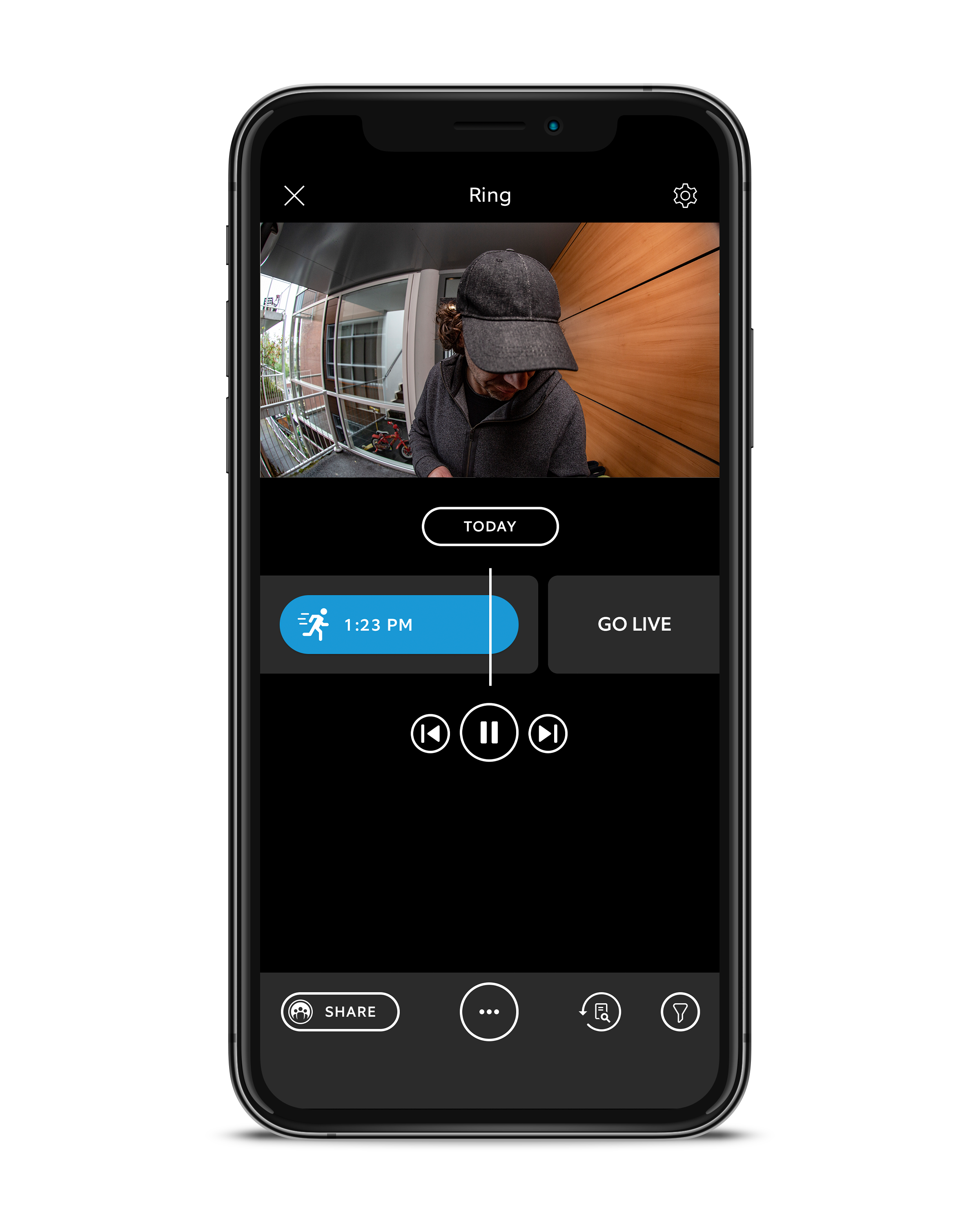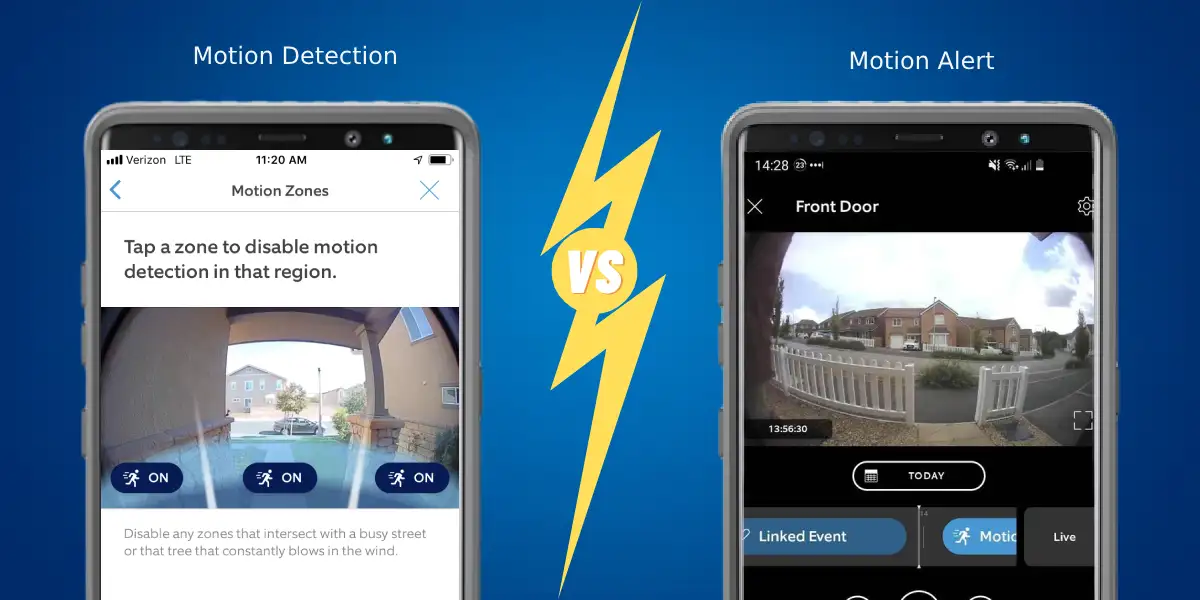Ring Alert Vs Motion Alert: Which One Should You Choose?
Let’s face it, folks – security is no longer optional in today’s world. Whether it’s about safeguarding your home or keeping an eye on your loved ones, choosing the right alert system can make all the difference. If you’ve been debating between ring alert vs motion alert, you’re not alone. Both options have their own set of pros and cons, and figuring out which one fits your needs can be overwhelming. But don’t worry, we’ve got you covered!
Before we dive deep into the ring alert vs motion alert debate, let’s take a moment to understand what these systems are all about. Ring alerts are notifications you receive from smart doorbells like the popular Ring Doorbell, which lets you know when someone’s at your front door. On the other hand, motion alerts are triggered whenever there’s movement detected in a specific area, regardless of whether it’s a person or not. Both systems play a crucial role in enhancing home security, but they serve slightly different purposes.
Now, if you’re like me, you probably want to know which one is better for your specific needs. Is it worth investing in both systems, or should you stick to just one? Stick around, because in this article, we’ll break it all down for you. From features and pricing to real-life scenarios, we’ll cover everything you need to know to make an informed decision. So, grab your favorite drink, and let’s get started!
Read also:Stephanie Soo Unveiling The Life Career And Influence Of A Rising Star
What Exactly Are Ring Alerts?
Alright, let’s start with Ring alerts. These bad boys are essentially notifications sent to your smartphone whenever your Ring Doorbell detects activity. Whether it’s a delivery person dropping off a package or an unexpected visitor ringing your doorbell, you’ll get an instant alert right on your phone. It’s like having a virtual butler who keeps you in the loop 24/7.
Here’s the kicker: Ring alerts don’t just notify you when someone rings the doorbell. They also trigger when the doorbell’s motion sensors detect movement. This means you’ll be alerted even if someone walks by your front door without pressing the button. Pretty cool, right?
Key Features of Ring Alerts
- Instant Notifications: Get alerts in real-time, no matter where you are.
- Live Video Streaming: Check out who’s at your door with a live video feed.
- Two-Way Audio: Communicate with visitors using your smartphone.
- Customizable Motion Zones: Set specific areas where you want motion detection to focus.
- Cloud Storage: Save recorded clips for future reference (with a Ring Protect subscription).
But here’s the thing – Ring alerts aren’t perfect. While they offer a ton of features, they can sometimes generate false alarms, especially if your motion zones aren’t set up correctly. Plus, if you want access to advanced features like cloud storage, you’ll need to pony up for a monthly subscription.
Understanding Motion Alerts
Now, let’s talk about motion alerts. These are notifications triggered by motion sensors installed in various parts of your home or property. Unlike Ring alerts, which are tied to a specific device like a doorbell, motion alerts can cover a much wider area. Think of them as your home’s invisible security net.
Motion alerts are great for monitoring areas that don’t have a doorbell, like backyards, driveways, or even garages. They’re perfect for catching unexpected visitors or intruders before they even get close to your house. Plus, they work day and night, thanks to advanced sensors that detect movement even in low-light conditions.
Why Motion Alerts Are Essential
- Broader Coverage: Cover more areas of your property without needing multiple devices.
- 24/7 Monitoring: Detect motion anytime, even when you’re not home.
- Customizable Settings: Adjust sensitivity levels to reduce false alarms.
- Integration with Smart Home Systems: Pair with other smart devices for enhanced security.
However, motion alerts aren’t without their drawbacks. For one, they can be prone to false positives, especially if you have pets or wildlife in your area. Additionally, they might not provide the same level of detail as Ring alerts, since they don’t usually come with live video feeds.
Read also:Hdhub4ucom Your Ultimate Guide To Highquality Entertainment
Ring Alert vs Motion Alert: A Side-by-Side Comparison
Now that we’ve covered the basics, let’s compare Ring alerts and motion alerts side by side. Here’s a quick rundown of how they stack up against each other:
1. Coverage Area
Ring alerts are tied to a specific device, usually a doorbell, so their coverage area is limited to the immediate vicinity of that device. Motion alerts, on the other hand, can cover a much larger area, depending on the placement of the sensors.
2. Detection Accuracy
Ring alerts are generally more accurate when it comes to detecting human activity, thanks to advanced AI algorithms that differentiate between people and other moving objects. Motion alerts, while effective, can sometimes trigger false alarms due to environmental factors like wind or wildlife.
3. Customization Options
Both systems offer customization options, but Ring alerts take the cake when it comes to flexibility. With customizable motion zones and advanced settings, you can fine-tune your notifications to suit your specific needs.
4. Cost
Ring alerts require an initial investment in a Ring Doorbell, which can range from $99 to $249 depending on the model. Additionally, if you want access to advanced features like cloud storage, you’ll need to subscribe to Ring Protect, which costs $3 to $10 per month. Motion alerts, on the other hand, can be more affordable, especially if you already have a smart home system in place.
Who Should Choose Ring Alerts?
If you’re someone who wants to keep tabs on your front door and receive notifications whenever someone visits, Ring alerts are a no-brainer. They’re perfect for urban dwellers or anyone who wants to monitor their doorstep without compromising on convenience.
Here’s a quick checklist to help you decide:
- Do you live in a high-traffic area where package theft is a concern?
- Do you want to communicate with visitors remotely?
- Are you willing to invest in a Ring Doorbell and possibly a subscription plan?
If you answered yes to any of these questions, Ring alerts might be the right choice for you.
Who Should Go for Motion Alerts?
Motion alerts are ideal for people who want to monitor a larger area or have specific security concerns that go beyond just the front door. If you live in a rural area or have a large property, motion alerts can provide an extra layer of protection by detecting intruders before they even reach your home.
Here’s another checklist to help you decide:
- Do you have a large property or yard that needs monitoring?
- Are you concerned about unauthorized access to certain areas of your home?
- Do you already have a smart home system that integrates with motion sensors?
If these scenarios resonate with you, motion alerts could be the better option.
Can You Have Both Systems?
Absolutely! In fact, many homeowners choose to use both Ring alerts and motion alerts to create a comprehensive security system. By combining the strengths of both systems, you can achieve maximum coverage and peace of mind.
For example, you could install a Ring Doorbell at your front door for instant notifications and live video streaming, while setting up motion sensors in your backyard to monitor for unexpected visitors. It’s like having two layers of security working together to keep your home safe.
Tips for Integrating Both Systems
- Centralize Your Alerts: Use a smart home hub to consolidate all your notifications in one place.
- Set Up Smart Rules: Create automation rules to trigger specific actions when certain events occur.
- Regularly Review Settings: Fine-tune your motion zones and sensitivity levels to minimize false alarms.
Just remember, combining systems can sometimes lead to information overload. Make sure you have a solid plan in place to manage all the data and notifications.
Real-Life Scenarios: Ring Alert vs Motion Alert
To help you better understand how these systems work in practice, let’s look at a couple of real-life scenarios:
Scenario 1: City Dweller
Meet Sarah, a busy professional living in a bustling urban neighborhood. She’s constantly worried about package theft and wants a way to keep an eye on her front door while she’s at work. After researching her options, Sarah decides to go with a Ring Doorbell. With its instant alerts and live video streaming, she can now monitor her doorstep from anywhere and even communicate with delivery drivers.
Scenario 2: Rural Homeowner
Then there’s John, who lives on a sprawling farm in the countryside. He needs a way to monitor his property for intruders, especially at night when visibility is low. John opts for motion sensors strategically placed around his property. Whenever there’s movement in a restricted area, he receives an instant alert on his phone, giving him plenty of time to investigate and take action if necessary.
Both Sarah and John found solutions that perfectly suited their needs, proving that the right security system depends on your unique circumstances.
Expert Insights and Statistics
According to a recent study by the National Crime Prevention Council, homes without security systems are up to three times more likely to be burglarized than those with them. This highlights the importance of investing in reliable security solutions like Ring alerts and motion alerts.
Additionally, a survey conducted by Ring revealed that over 80% of users felt safer after installing a Ring Doorbell. Similarly, motion sensors have been shown to reduce false alarms by up to 50% when properly configured, according to a report by the International Association of Chiefs of Police.
Final Thoughts
So, there you have it – a comprehensive breakdown of the ring alert vs motion alert debate. Both systems offer unique advantages and can significantly enhance your home security. Whether you choose one over the other or decide to use both, the key is to select a solution that aligns with your specific needs and budget.
Before we wrap up, here’s a quick recap of what we’ve covered:
- Ring alerts are great for monitoring your front door and communicating with visitors remotely.
- Motion alerts provide broader coverage and are ideal for monitoring larger areas.
- Both systems can be used together for maximum security.
Now, it’s your turn! Have you tried either of these systems? Share your experiences in the comments below. And don’t forget to check out our other articles for more tips on home security and smart living. Stay safe, folks!


